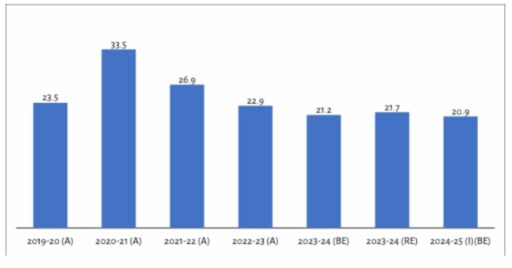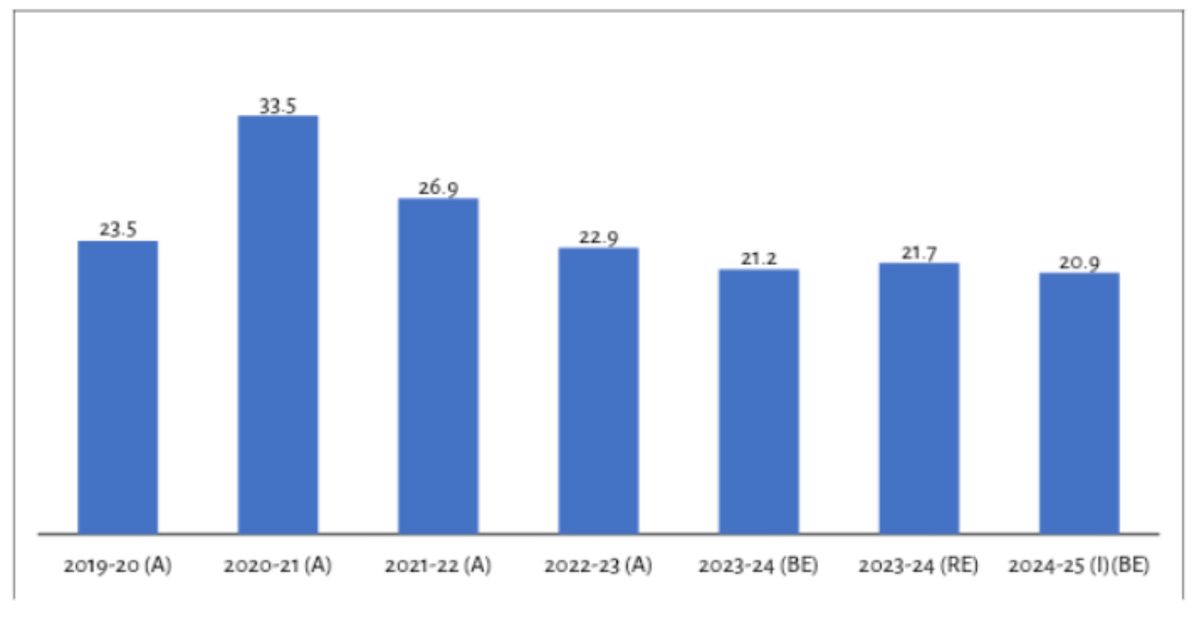Exploring the intricacies of state capital budgets is essential for understanding how states manage to fund large-scale projects and infrastructure. This article delves into the various methods states employ to finance their capital budgets, including federal assistance, debt instruments, and innovative funding mechanisms. Moreover, it examines the regulatory landscape that shapes state financing and the future challenges and opportunities that lie ahead in the fiscal management of state resources.
Key Takeaways
- States rely on a mix of federal funding, state bonds, and budgetary allocations to finance their capital budgets, with each method presenting unique advantages and challenges.
- Regulatory requirements, such as the Unfunded Mandates Reform Act (UMRA), impose significant compliance costs and can influence state expenditure decisions.
- Alternative financing mechanisms, including Public-Private Partnerships (PPPs) and crowdsourcing, are increasingly important for states seeking to supplement traditional funding sources.
- Transparency and accountability are critical in state financing, with public access to capital budget information and whistleblower protections ensuring the integrity of financial management.
- Economic fluctuations, technological advancements, and evolving federal-state financial relations present both challenges and opportunities for future state capital budget financing.
Understanding the Framework of State Capital Budgets


The Role of Federal Funding and Grants
Federal funding and grants play a pivotal role in state capital budgets, providing essential resources for a variety of projects. Grant awards include money the federal government commits for projects in states, local jurisdictions, regions, territories, and tribal reservations. These funds are often earmarked for specific purposes, such as infrastructure improvements, education, and public safety.
States may receive federal grants through various programs, each with its own set of requirements and limitations. For instance:
- Formula grants are distributed based on predefined criteria, such as population size or income levels.
- Project grants are awarded competitively for specific projects or programs.
- Block grants offer more flexibility, allowing states to use the funds for a broad range of activities within a certain category.
The strategic use of federal grants can significantly bolster a state’s ability to finance capital projects, ensuring that critical infrastructure and services are maintained or improved.
It is crucial for states to navigate the complexities of federal grant programs to maximize their benefits. This involves understanding the application process, compliance with regulatory requirements, and the effective management of awarded funds.
State Bonds and Public Debt Instruments
States often rely on the issuance of bonds and other public debt instruments as a primary method for financing their capital budgets. Bonds provide a mechanism for states to raise large sums of money upfront, which can be used for infrastructure projects, educational facilities, and other public works. These bonds are typically repaid over time with interest, using various revenue streams such as taxes or fees.
The types of bonds issued can vary, including general obligation bonds, which are backed by the full faith and credit of the issuing state, and revenue bonds, which are repaid from specific income sources. The choice between these bonds depends on the state’s fiscal strategy and the nature of the project being funded.
States must carefully balance the benefits of immediate capital with the long-term obligations created by issuing public debt. This balance is crucial to maintain fiscal health and avoid overburdening future budgets.
Here is a simplified breakdown of the types of state bonds commonly used:
- General Obligation Bonds: Backed by the state’s taxing power.
- Revenue Bonds: Secured by specific revenue sources, such as tolls or utility payments.
- Appropriation Bonds: Dependent on legislative appropriations.
- Certificate of Participation: A share in lease revenues or other contractual obligations.
Budgetary Allocations and Fiscal Policies
State capital budgets are intricately tied to the fiscal policies and budgetary allocations set forth by state governments. These allocations are critical in determining the scope and scale of capital projects that can be undertaken in any fiscal year. States must balance their capital needs with available resources, often leading to prioritization of projects that align with broader economic and policy goals.
- Prioritization of capital projects
- Alignment with economic goals
- Resource availability
States’ fiscal policies often reflect a commitment to maintaining a balance between investing in capital projects and ensuring fiscal responsibility. This delicate balance requires careful planning and adherence to budgetary constraints.
The table below provides a simplified view of how budgetary allocations might be distributed across different sectors within a state’s capital budget:
| Sector | Percentage of Capital Budget |
|---|---|
| Education | 35% |
| Healthcare | 25% |
| Transportation | 20% |
| Public Safety | 10% |
| Environment | 5% |
| Other | 5% |
This distribution is illustrative and varies significantly from state to state, depending on specific needs and policy directives. The fiscal policies that guide these allocations are essential for the sustainable development of state infrastructure and public services.
Analyzing the Impact of Regulatory Requirements


The Unfunded Mandates Reform Act (UMRA) and State Expenditures
The Unfunded Mandates Reform Act (UMRA) presents a significant consideration for state budgets, particularly when new federal regulations are introduced. UMRA requires agencies to assess the financial impact of regulations on state, local, and Tribal governments. This includes a mandate for agencies to prepare a statement if a rule may result in expenditures exceeding $177 million in any one year.
- Agencies must identify and consider a reasonable number of regulatory alternatives.
- The assessment must satisfy UMRA’s analytical requirements, although public comments are invited on additional factors.
The UMRA’s stipulations aim to mitigate the financial burden on states by ensuring that federal agencies conduct thorough economic analyses before implementing new regulations.
The act also intersects with other regulatory requirements, such as the Regulatory Flexibility Act (RFA) and the Paperwork Reduction Act of 1995 (PRA), which further influence state expenditures. While FinCEN has not anticipated material changes in expenditures for governments due to the proposed rule, the private sector may face new reporting and recordkeeping requirements, which are considered in the regulatory impact assessment.
Compliance Costs for State-Funded Projects
The financial burden of compliance for state-funded projects can be substantial, encompassing a range of expenses from training programs to technology upgrades. These costs are often not fully compensated by efficiency gains or other savings, making them a significant factor in the overall budgeting process for state projects.
The estimates of compliance costs should be viewed as a pro forma accounting figure, reflecting only a portion of the true financial impact on state budgets.
For instance, the implementation of new training programs, filing of required reports, and adherence to recordkeeping mandates all contribute to the compliance costs. These requirements, while necessary for transparency and accountability, can disproportionately affect smaller entities, potentially leading to increased transaction costs and anticompetitive effects.
The table below outlines the estimated upper bound costs of compliance, including wages and technology investments, for state-funded projects:
| Compliance Aspect | Estimated Upper Bound Cost |
|---|---|
| Training Programs | $X,XXX.XX |
| Technology Upgrades | $X,XXX.XX |
| Reporting & Recordkeeping | $X,XXX.XX |
Note: The actual costs may vary depending on the specific requirements and scale of the project.
Assessing the Burden of New Reporting and Recordkeeping Mandates
The introduction of new reporting and recordkeeping mandates can significantly increase the administrative burden on states. The costs associated with compliance are multifaceted, encompassing both direct financial outlays and indirect expenses such as time and labor.
The burden of compliance is not just a financial matter; it also involves the allocation of human resources and technological investments to meet new requirements.
For instance, the upper bound estimates of compliance with proposed mandates include both wage and technology costs. These costs vary depending on the role of the reporting person and the value of their time, which is influenced by their primary occupation.
| Compliance Cost Factor | Description |
|---|---|
| Time Burden | Time required for compliance with reporting and recordkeeping. |
| Wage Costs | Financial cost of labor for compliance activities. |
| Technology Costs | Investments in systems and software to facilitate compliance. |
Public input is sought to refine these estimates and improve the methodology, highlighting the dynamic nature of assessing compliance burdens. The Regulatory Flexibility Act (RFA) and the Paperwork Reduction Act of 1995 (PRA) are key frameworks that influence these assessments, alongside the Unfunded Mandates Reform Act of 1995 (UMRA).
Exploring Alternative Financing Mechanisms


Public-Private Partnerships (PPPs) and Their Viability
Public-Private Partnerships (PPPs) have emerged as a critical component in financing state capital budgets. These partnerships allow for the pooling of resources between government entities and private sector investors to fund large-scale infrastructure projects. The viability of PPPs often hinges on the alignment of interests between the public and private sectors, as well as the ability to effectively manage risks.
- Risk Sharing: A key advantage of PPPs is the distribution of risks between the public and private partners.
- Efficiency Gains: Private sector involvement can lead to increased efficiency and innovation in project execution.
- Long-term Investment: PPPs facilitate long-term investments in public infrastructure, which might not be feasible through traditional funding methods.
PPPs require careful structuring to ensure that the benefits are equitably shared and that the projects serve the public interest without imposing undue financial burdens on the state.
The growth of unregistered Pooled Investment Vehicles (PIVs), such as private equity funds and special purpose financing vehicles, presents both opportunities and challenges for PPPs. While these entities can provide substantial capital, their lack of comprehensive regulation may pose risks of abuse by illicit actors, as highlighted by the assets under management in the private fund sector reaching approximately $20 trillion.
Leveraging Non-Profit Organizations and Charities
Non-profit organizations and charities play a significant role in state capital budget financing, often filling gaps where public funds are insufficient. These entities can mobilize resources for a variety of projects, from social services to infrastructure development. However, it’s crucial to recognize the potential risks associated with their involvement.
While non-profits are generally seen as benevolent actors in the financial landscape, they are not immune to financial misconduct. Investigations have revealed instances of fraud and money laundering within the sector, highlighting the need for stringent oversight. To mitigate these risks, states can implement measures such as:
- Regular audits and financial reporting
- Compliance checks with state and federal regulations
- Transparent fundraising and expenditure practices
It is essential for states to foster a climate of trust and accountability when engaging with non-profit organizations and charities to ensure that the funds are used effectively and ethically.
Despite these challenges, the collaboration between states and non-profit organizations remains a valuable tool for achieving public goals. With proper oversight, these partnerships can enhance the impact of state capital budgets and contribute to the welfare of communities.
Innovative Funding Through Crowdsourcing and Social Bonds
In the quest for alternative financing, states are increasingly turning to crowdsourcing and social bonds as viable options. Crowdsourcing involves soliciting contributions from a large group of people, typically via the internet, to fund specific projects or initiatives. This method not only garners financial support but also fosters a sense of community involvement and investment in public projects.
Social bonds, on the other hand, are instruments that raise funds for projects with positive social outcomes. They are often targeted at addressing issues such as education, healthcare, and affordable housing. The appeal of social bonds lies in their ability to attract investors who are interested in both financial returns and social impact.
The innovative nature of these funding mechanisms offers a dual benefit: engaging the public directly in state financing and promoting socially responsible investment.
While these methods are promising, they also present challenges, such as ensuring transparency and measuring the impact of the funded projects. Below is a list of key considerations for states exploring these options:
- Establishing clear guidelines for project selection and funding criteria.
- Developing robust platforms for crowdsourcing that ensure security and ease of use.
- Creating transparent reporting systems to track the use of funds and outcomes.
- Engaging with communities to build trust and encourage participation.
- Aligning social bond projects with investor expectations and state priorities.
The Role of Transparency and Accountability


Public Access to Capital Budget Information
Ensuring public access to capital budget information is a cornerstone of democratic accountability. Transparency in state financing allows citizens to understand where and how their tax dollars are being invested. It also serves as a deterrent to misallocation and corruption, fostering a culture of trust between the government and its constituents.
States have taken various approaches to enhance transparency. Some common methods include:
- Publishing detailed budget proposals and final reports online
- Providing interactive tools for citizens to explore budget data
- Holding public hearings and forums for discussion and feedback
The accessibility of budget information is not just a matter of public record but a reflection of the state’s commitment to its citizens.
Moreover, the Guide to the California State Budget Process is an exemplary resource that outlines the intricacies of budget formulation and execution, offering a transparent view into the state’s fiscal management.
Monitoring and Auditing State Expenditures
Effective monitoring and auditing are crucial for ensuring that state funds are used appropriately and efficiently. These processes help to detect and prevent misuse of funds, as well as to identify opportunities for cost savings. Techniques for reducing expenses include tracking spending, which is a fundamental aspect of monitoring state expenditures.
- Regular financial audits
- Continuous performance evaluations
- Implementation of modern accounting systems
- Adoption of transparent reporting practices
The goal is to maintain a high standard of fiscal responsibility and to foster public trust in state financial management.
Auditing also involves assessing compliance with regulatory requirements, such as those outlined in the Unfunded Mandates Reform Act (UMRA). It is essential to evaluate whether state agencies integrate implementation costs into their existing budgets effectively, without compromising the reliability or accuracy of financial reporting.
The Importance of Whistleblower Protections
Whistleblower protections are a critical component in maintaining the integrity of state financial management. These safeguards encourage individuals to report misconduct without fear of retaliation. They serve as a check against corruption and misallocation of funds, which can undermine public trust and fiscal stability.
Whistleblower protections not only deter malfeasance but also provide a mechanism for accountability and transparency in state capital budgets.
The establishment of entities like the Office of the Whistleblower within the SEC underscores the value placed on these individuals. By offering incentives and confidentiality protections, such offices facilitate the uncovering of potential violations of securities laws and other financial regulations. The effectiveness of whistleblower programs can be seen in the number of cases successfully prosecuted as a result of insider disclosures.
- Ensuring anonymity to protect whistleblowers from backlash
- Providing financial incentives to encourage reporting
- Implementing strict confidentiality measures to safeguard the identity of the whistleblower
- Establishing clear channels for reporting and follow-up on disclosures
Future Challenges and Opportunities in State Financing


Predicting the Effects of Economic Fluctuations
Understanding the future of state financing requires a keen eye on economic fluctuations and their potential impacts. Economic models often incorporate a range of variables, from inflation rates to employment growth projections, to predict how states can manage their capital budgets during different economic cycles.
For instance, the Federal Reserve Bank of St. Louis provides inflation data that is crucial for estimating annual wage growth, which in turn affects the opportunity cost of training employees. Similarly, the Bureau of Labor Statistics (BLS) offers projections on employment growth that help states plan for industry-specific hiring inflows.
The ability to accurately forecast economic conditions is essential for states to prepare for and mitigate the risks associated with economic downturns or unexpected financial pressures.
However, these predictions are not without their challenges. The variance in estimated values across different industries can lead to significant discrepancies in impact analyses, with potential aggregate effects on small businesses varying by millions of dollars for seemingly minor cost changes.
Technological Advancements in Budget Management
The integration of advanced technologies into state budget management systems has been transformative. State financial officers are now equipped with tools that enable more accurate forecasting and real-time tracking of expenditures. This has led to a more dynamic approach to managing capital budgets, with the ability to adjust to economic changes swiftly.
- Enhanced data analytics for predictive budgeting
- Automated systems for real-time expenditure tracking
- Blockchain for secure and transparent transactions
The adoption of these technologies not only streamlines processes but also provides a layer of security and accountability that was previously difficult to achieve.
The recent announcement by the Biden-Harris Administration regarding the Innovation Engines Awards highlights the growing recognition of technology’s role in fostering economic development. This initiative is set to invest over $530 million into U.S. regions, catalyzing their transformation into innovation ecosystems. Such federal support underscores the potential for technology to revolutionize not only state budget management but also regional economic landscapes.
The Evolving Landscape of Federal-State Financial Relations
As the financial landscape shifts, states must navigate the complexities of federal-state financial relations with agility and foresight. Federal policies and economic conditions heavily influence state financing strategies, often dictating the availability of funds and the terms of financial support. The interplay between federal oversight and state autonomy is a delicate balance that requires constant adjustment to ensure fiscal sustainability.
- Lessons from corporate finance, such as diversified capital structures and robust hedging programs, are increasingly relevant to state financial planning.
- Strategic responses to systemic risks are informed by past crises, shaping how states prepare for and manage economic fluctuations.
The evolving relationship between federal and state governments necessitates a proactive approach to capital budgeting, ensuring that states can effectively respond to changes in federal support and regulatory landscapes.
States are also exploring new avenues for collaboration and innovation in financing, drawing on the experiences of the private sector to enhance their capital budgeting processes. The goal is to create resilient financial systems capable of withstanding economic pressures while meeting the needs of their constituents.
Conclusion
In conclusion, the financing of state capital budgets is a complex interplay of federal regulations, agency assessments, and private sector contributions. As evidenced by the intricate details from FinCEN’s Congressional Budget Justification and the considerations under Executive Order 13563, states must navigate a myriad of requirements and impacts. The Unfunded Mandates Reform Act (UMRA) further complicates this landscape, mandating thorough analysis before implementing rules that significantly affect expenditures. Despite these challenges, states find innovative ways to fund their capital projects, often balancing regulatory compliance with financial ingenuity. The insights from various stakeholders, including Global Financial Integrity and Transparency International, underscore the importance of transparency and accountability in these financial processes. Ultimately, the ability of states to finance their capital budgets effectively is crucial for maintaining and developing the infrastructure that supports the economic and social well-being of their communities.
Frequently Asked Questions
What are the primary sources of funding for state capital budgets?
State capital budgets are primarily funded through federal funding and grants, state bonds and public debt instruments, and budgetary allocations within the state’s fiscal policies.
How does the Unfunded Mandates Reform Act (UMRA) impact state expenditures?
The UMRA requires agencies to assess potential costs to state, local, and Tribal governments for rules resulting in significant expenditures. It also necessitates considering regulatory alternatives to minimize the financial burden on these entities.
What are the compliance costs associated with state-funded projects?
Compliance costs for state-funded projects can include training program implementation, filing reports, and adhering to recordkeeping requirements, which vary depending on specific regulatory mandates.
How do public-private partnerships (PPPs) contribute to state capital financing?
PPPs allow states to leverage private sector investment for public projects, sharing the costs and risks associated with capital developments, thus providing an alternative financing mechanism.
What role do non-profit organizations play in state capital financing?
Non-profit organizations can contribute to state capital financing through grants, donations, and partnerships, offering financial support for projects that align with their mission and objectives.
How does transparency and accountability affect state capital budgeting?
Transparency ensures public access to capital budget information, fostering trust and enabling oversight. Accountability involves monitoring and auditing expenditures to prevent misuse of funds and ensure compliance with budgetary goals.





